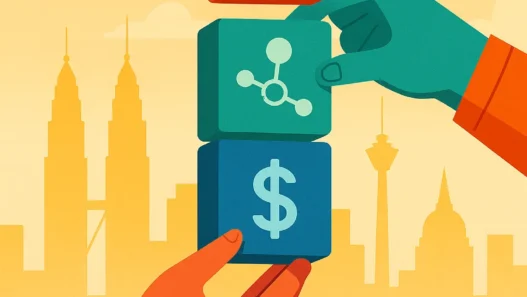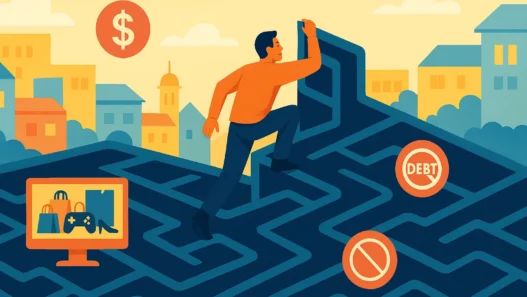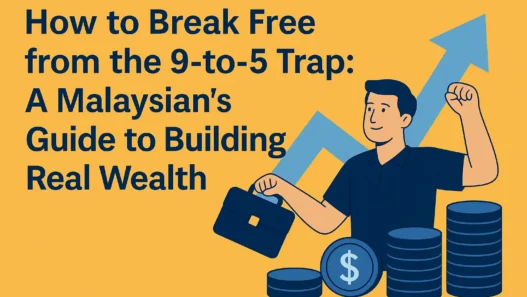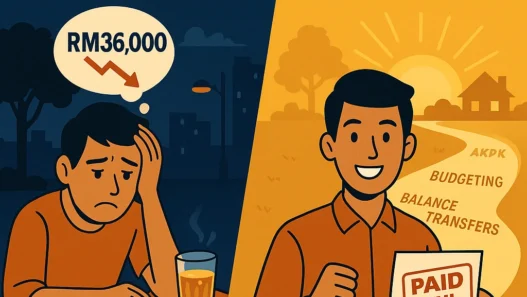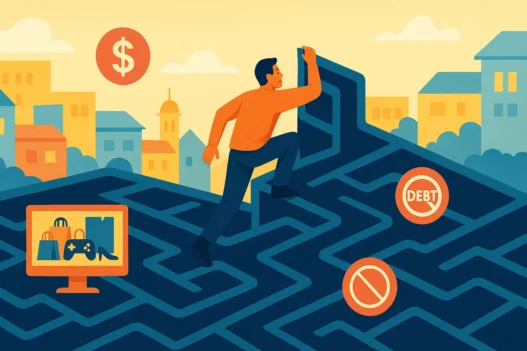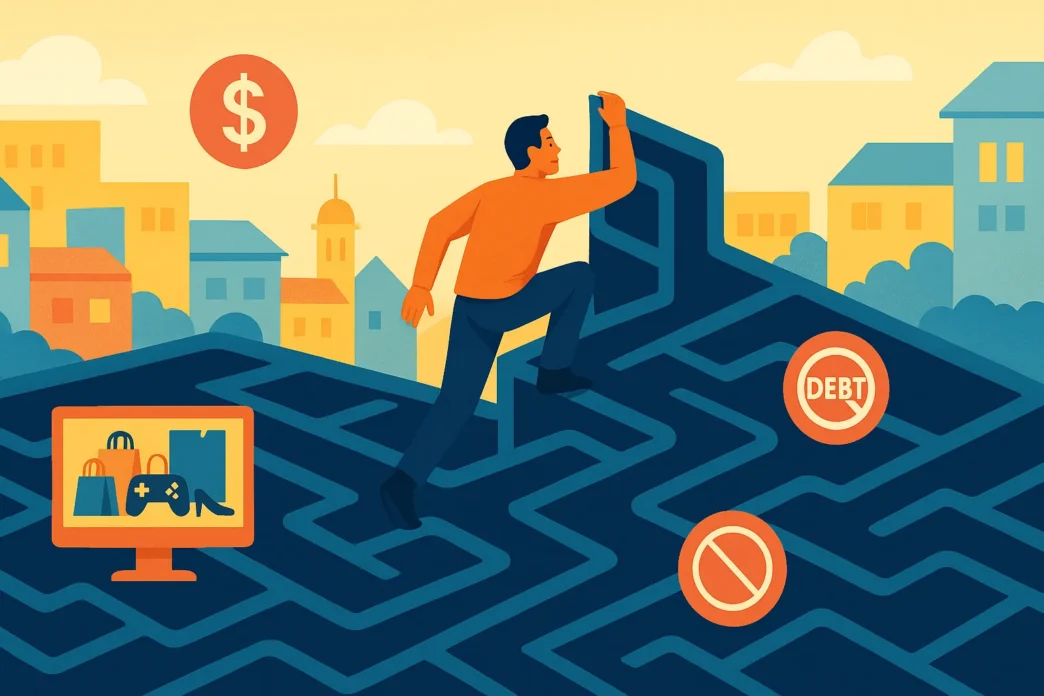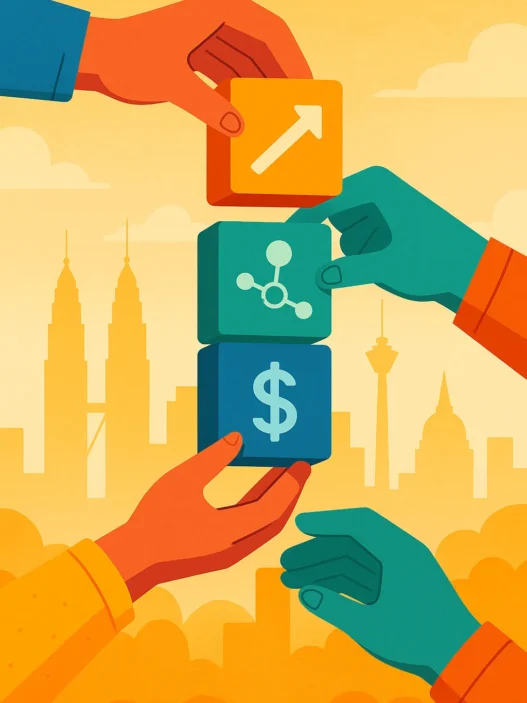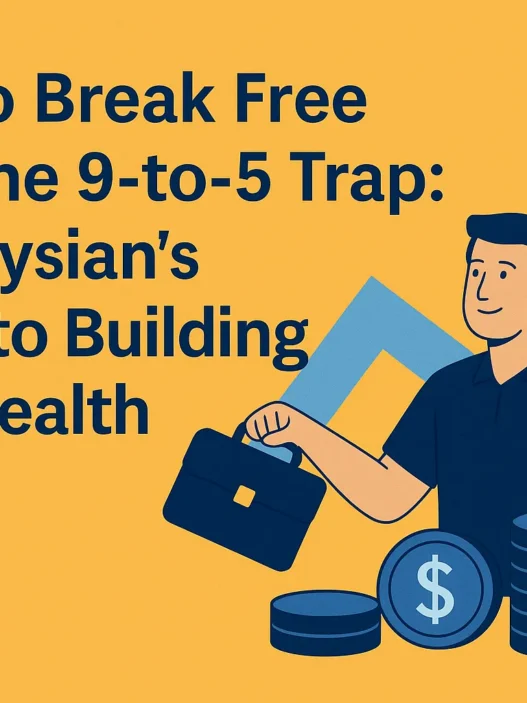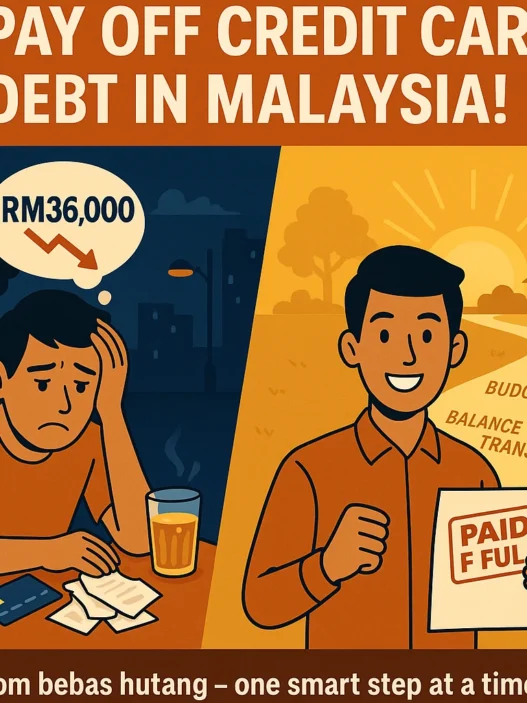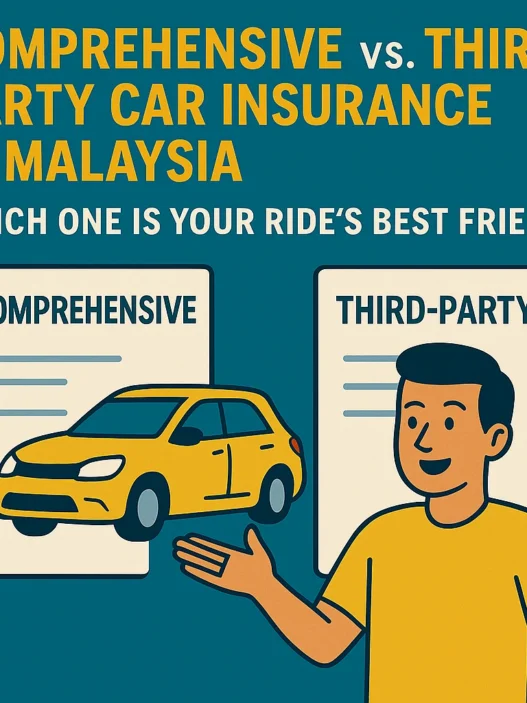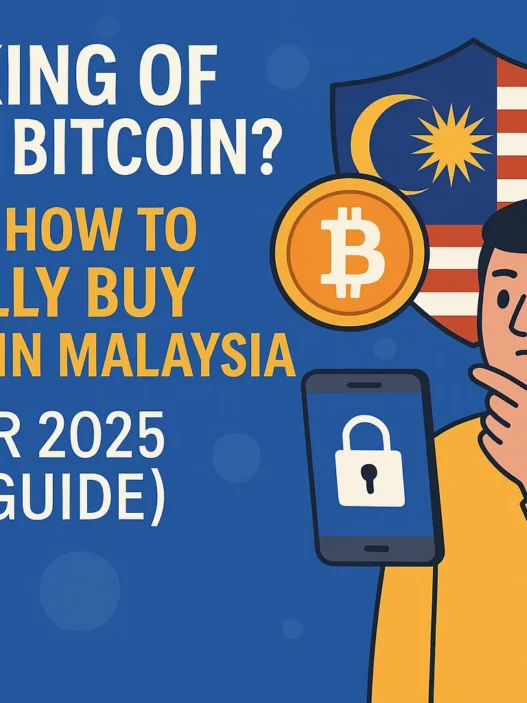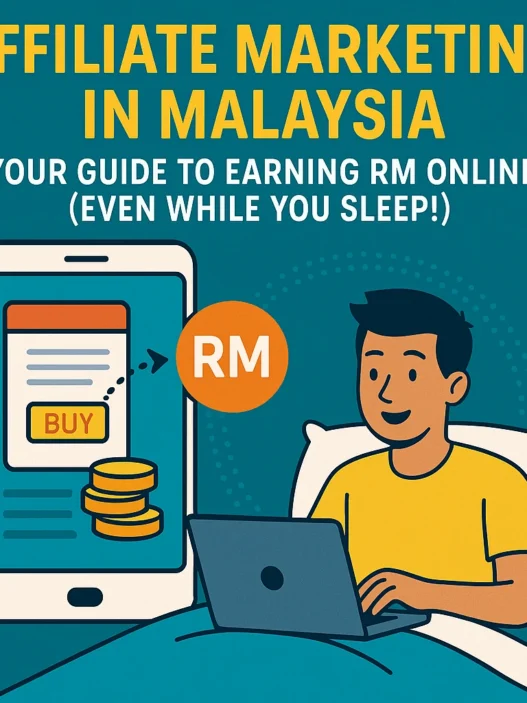Eh, let’s talk straight. Do you ever feel like you’re running on a hamster wheel? You work hard, you follow the rules, you get your salary… and by the end of the month, your bank account is looking tragically empty again. You see influencers on Instagram living their best lives, your friends are upgrading their cars, and you’re just trying to make sure your Touch ‘n Go has enough balance for the week. Aiyo.
We often tell ourselves it’s just bad luck, or maybe we’re not “working smart enough.” But what if it’s not just you? What if the struggle so many of us in the B40 and M40 groups feel is part of a bigger, almost invisible system? A system of traps that are practically *designed* to keep us scrambling just to stay afloat.
This isn’t about blaming others or making excuses. It’s about opening our eyes. Understanding these traps is the first, crucial step to breaking free and finally building the life you deserve. So, grab a cup of teh tarik, and let’s break down the nine hidden traps that might be holding you back.
1. The “Information Got Filtered” Trap (Information Asymmetry)
What it is: You’re making big life decisions based on ‘kawan-kawan’ advice or what you see in your WhatsApp group. The truly valuable information—about investments, career moves, or government grants—never seems to reach you. It’s like you’re playing chess, but you can only see half the board.
Why it happens in Malaysia: Our social circles are tight, right? We trust our family and friends. But this also means our information is often limited to what they know, which can be outdated or just plain wrong. Meanwhile, high-value info is often shared in exclusive seminars, expensive networking events, or professional circles that many of us aren’t a part of. We’re left scrolling through low-quality info that makes us anxious but doesn’t actually help us improve.
You can’t win a game where you don’t know all the rules.
How to Break Free, lah!
- Be an info-hunter: Actively follow reputable financial blogs, government agency sites (like PIDM or AKPK), and industry leaders on LinkedIn. Don’t just rely on your usual feed.
- Filter the noise: Ask yourself, “Does this information help me make a better decision, or does it just make me feel stressed?” Unfollow sources that only spread fear without offering solutions.
- Invest in knowledge: Sometimes, a paid webinar or a book is a better investment than a fancy coffee. Prioritise learning.
2. The “Gaya Must Have” Trap (Consumerism & Debt)
What it is: That feeling when you see a new iPhone or a limited-edition sneaker and suddenly, you need it. Brands, influencers, and “Buy Now, Pay Later” (BNPL) schemes create a powerful desire for things we can’t really afford, all in the name of status or “keeping up.” Before you know it, you’re in debt for something you didn’t even need yesterday.
Why it happens in Malaysia: ‘Muka’ (face) is a big deal here. We feel the pressure to project an image of success. This makes us vulnerable to marketing that ties brands to status. Financial tools like BNPL are everywhere—on Shopee, at the mall—making it dangerously easy to say “yes” now and worry later. The easy access to credit, combined with social pressure, is a recipe for debt.
Your self-worth isn’t measured in monthly installments.
How to Break Free, lah!
- Need vs. ‘Nafsu’: Before you click “Add to Cart,” pause. Is this a genuine need, or is it an impulse (nafsu) created by an ad? Wait 24 hours. You’ll be surprised how often the “need” disappears.
- Practice ‘Reverse Budgeting’: Don’t just spend what’s left after expenses. The moment your salary comes in, force yourself to save a set amount first. Transfer it to an account you can’t easily access. Spend what’s left after saving.
- Unfollow to save: Curate your social media. Unfollow accounts that constantly make you feel like you need to buy something to be happy.
3. The “Rat Race on the LDP” Trap
What it is: You get a job to pay the bills. You get a raise, so you upgrade your car or move to a nicer condo. Now your bills are higher, so you have to work even harder. You’re earning more, but you’re not getting richer. You’re just a hamster in a more expensive wheel, stuck in the daily jam, both literally and financially.
Why it happens in Malaysia: The fear of losing our job or getting a pay cut is real. This makes us cling to our 9-to-5, even if it’s draining. We confuse liabilities with assets. We think our new car or condo is an asset, but it’s really a liability that takes money out of our pocket every month. This cycle of “earn more, spend more” is fueled by fear and a desire for instant gratification.
Stop upgrading your lifestyle with every pay raise; upgrade your assets instead.
How to Break Free, lah!
- Learn the difference: An asset puts money IN your pocket (e.g., dividends from ASB, rental income, stocks). A liability takes money OUT (e.g., car loan, personal loan for a holiday). Focus on buying assets.
- Skill up after 5 PM: Dedicate an hour every day to learning a new, high-value skill. Think coding, digital marketing, a new language, or a professional certification. This increases your value per hour, not just your hours worked.
- Resist lifestyle inflation: The next time you get a bonus or raise, pretend it didn’t happen. Put that extra money straight into your savings or investments.
4. The “Memang Nasib Macam Ni” Trap (Learned Helplessness)
What it is: After facing setbacks for so long, you start to believe that failure is your destiny. You think, “I’m not smart enough,” “People like me don’t get rich,” or “Confirm cannot one.” You get so used to the walls of your situation that you stop looking for the door, just like a prisoner who’s forgotten what freedom feels like.
Why it happens in Malaysia: It’s a mix of personal experience and societal barriers. Maybe you’ve been rejected for jobs because you didn’t go to the “right” university or speak with a certain accent. After a while, it’s easy to internalise these rejections and believe the problem is you, not the system. You see others struggle and think, “See? It’s just how it is for us.” This mindset becomes a self-fulfilling prophecy.
The story you tell yourself about your life is the life you will live.
How to Break Free, lah!
- Find your ‘sifu’: Look for role models who came from a similar background as you and succeeded. Study their journey. What did they do differently? If they can do it, it proves it’s possible.
- Small wins matter: Break your big goals into tiny, achievable steps. Finishing a free online course, saving your first RM100, or just reading one chapter of a book. These small victories build momentum and prove to yourself that you can change.
- Challenge your own ‘BS’: When you hear that negative voice in your head, challenge it. Is it really true that you “can’t”? Or have you just not found the right way yet?
5. The Gig Economy “Freedom” Trap
What it is: Working as a delivery rider or e-hailing driver seems great at first—flexible hours, instant cash. But soon you find yourself working longer and longer hours just to make ends meet, controlled by an algorithm that’s designed to squeeze every last drop of productivity out of you. You have no time or energy left to plan for the future or learn new skills.
Why it happens in Malaysia: The gig economy exploded by offering an accessible way to earn money. But this “freedom” comes at a cost: no EPF, no SOCSO, no medical leave, no job security. The platforms’ algorithms are designed to maximise their profit, not your well-being. It’s a classic case of winning the battle (paying this month’s rent) but losing the war (building a stable future).
Don’t trade long-term growth for short-term cash. The interest rate is too high.
How to Break Free, lah!
- See it as a bridge, not a destination: Use gig work as a temporary tool to get by, but always have an exit plan. What’s the next step?
- Turn downtime into uptime: While waiting for your next order, listen to an educational podcast or audiobook instead of scrolling TikTok. Even 15-20 minutes a day adds up.
- Network on the job: Talk to people. You never know who you might meet. A customer could be a future employer or business contact. Always be open to opportunities beyond the gig.
6. The “Kawasan” & “Keturunan” Trap (Environment & Habits)
What it is: Your environment (your ‘kawasan’) and your upbringing (‘keturunan’) have shaped your habits and worldview more than you think. If you grew up in a place where everyone focused on “cari makan” for today, it’s hard to develop a mindset for long-term investment. Your surroundings reinforce a cycle of short-term thinking.
Why it happens in Malaysia: This is a sensitive one. For many, the environment they grew up in lacked resources—no tuition centres, underfunded schools, no role models for professional careers. The focus, out of necessity, was on getting a job—any job—quickly to help the family. This creates a habit of prioritising immediate, small cash over skills that take years to build but pay off much more in the long run. It’s not laziness; it’s a survival strategy that becomes a trap.
You can’t choose where you came from, but you can choose where you’re going by choosing what you learn and who you learn from.
How to Break Free, lah!
- Acknowledge, don’t blame: Recognise how your background has shaped your mindset. Understand it, but don’t let it be an excuse to stay stuck. This awareness is your superpower.
- Change your ‘kawasan’: If you can’t physically move, change your digital environment. Join online communities of people with the goals you want to achieve—programmers, investors, entrepreneurs. Let their mindset influence you.
- Dare to be different: Have the courage to break family or community norms if they are holding you back. This is incredibly hard, but it’s essential for creating a new future for yourself and the next generation.
7. The “System Kasi Chance” Trap (Social Exclusion)
What it is: This is when the system itself seems to work against you. It’s the feeling that no matter how hard you work, the rules are written for someone else to win. It can be subtle, like unspoken biases in hiring, or structural, like unequal access to quality education based on where you live.
Why it happens in Malaysia: We see this in various forms, from the urban-rural divide in educational resources to certain industries feeling like a “closed club.” When this happens repeatedly, the media and even society might start to paint the picture that those who are left behind are just “lazy” or “don’t want to try.” This narrative makes you blame yourself and stops you from questioning the fairness of the system itself.
When the game is rigged, the bravest move is to learn how to play a different game.
How to Break Free, lah!
- Stop self-blaming: Recognise that some barriers are structural, not personal. It’s not that you’re “not good enough”; it’s that the playing field isn’t level. This frees you from the psychological burden.
- Find the back door: If the front door is closed, look for another way in. The internet has leveled the playing field in many ways. You can build skills, a portfolio, or a business online without needing a traditional “stamp of approval.”
- Build your tribe: Connect with others facing similar challenges. A supportive community can provide emotional strength, share resources, and help you navigate unfair systems together.
8. The “Label” Trap (Symbolic Conditioning)
What it is: Society loves labels: “budak flat,” “kampung boy,” “rempit,” “kayangan.” These labels come with a whole set of expectations and limitations. When you start to believe and identify with a negative label, you unconsciously limit your own potential. You start to act the part.
Why it happens in Malaysia: Our culture is quite hierarchical, and labels are a form of social shorthand. The media often reinforces stereotypes. The constant message of “work hard and you’ll succeed” is powerful, but it subtly implies that if you haven’t succeeded, you must not be working hard enough. Consumer culture also plays a role, making you believe you need certain brands to shed one label and adopt another, more “successful” one.
Don’t let a label someone else gave you become the title of your life story.
How to Break Free, lah!
- Develop critical thinking: Question the narratives you see on TV and social media. Who benefits from you believing this story or this label? Be a conscious consumer of media, not a passive one.
- Define your own value: Your worth isn’t tied to your job title, your postal code, or the brand of your phone. Write down your own definition of success. It might be financial freedom, peace of mind, or strong family bonds—things no label can touch.
- Curate your identity: Actively build an identity based on your actions and values, not the labels society gives you. Be the person who is disciplined, a lifelong learner, a kind friend. These are identities you control.
9. The “Scroll Sampai Lebam” Trap (Tittytainment)
What it is: This one is the final boss. It’s the endless scrolling on TikTok, binge-watching Netflix series, and jumping from one viral video to the next. This constant stream of cheap, easy entertainment numbs your mind and kills your ambition. It keeps you occupied but not engaged, entertained but not enriched.
Why it happens in Malaysia: It’s everywhere and it’s free. Data plans are relatively cheap. This “tittytainment” (a term for mass-produced entertainment to pacify the masses) is designed to be addictive. It gives you quick dopamine hits, making real, focused effort—like reading a book or completing a course—feel boring and difficult. It trains your brain for instant gratification, destroying your ability to focus on long-term goals.
The cheapest entertainment often has the highest long-term cost: your potential.
How to Break Free, lah!
- Set a ‘scroll budget’: You budget your money, so why not your time? Set a strict daily limit for entertainment apps (most phones have this feature). When the time is up, it’s up.
- Swap passive for active: Instead of passively consuming content, create something. Write a blog post, learn to edit a video, start a small garden. Engage your brain instead of numbing it.
- Schedule your growth: Just as you schedule meetings, schedule time for learning and self-improvement in your calendar. Protect that time fiercely. It’s your appointment with your future self.
Conclusion: It’s Not Your Fault, But It Is Your Fight
Reading through this, you might feel a bit down. That’s okay. Recognising these traps is the hardest part. The key takeaway is this: your financial struggle is likely not a personal failing, but a response to a system with hidden rules.
But here’s the good news. Now you can see the traps. You understand the game. This knowledge is power. It shifts you from a place of self-blame to a position of strategy. You can start making conscious choices to sidestep these pitfalls, one small decision at a time.
It won’t be easy, and it won’t happen overnight. But by raising your awareness, focusing on skills, managing your environment, and protecting your focus, you can absolutely break the cycle. You can build a foundation for a stronger financial future for yourself and your family.
So, what’s your next move?
Which trap resonated with you the most? Share your thoughts in the comments below. Let’s start a conversation, because breaking free is a journey we don’t have to take alone.



